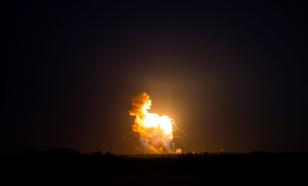Hurricane season
As millions of Floridians battled another sweltering day without air conditioning, more than 6,000 utility workers from across the eastern United States streamed into Florida on Tuesday to help state power companies end the misery. Many out-of-state crews were returning to familiar territory, having assisted after Hurricane Charley cut a devastating swath through Florida on Aug. 13, disrupting power to a million customers. It could be as late as next week before those residents in hard-hit or remote areas get their power back following Frances, state officials said. A 24-member crew from Killen Contractors Inc., of Brandon, Miss., spent 18 days in Florida after Charley, setting poles and stringing lines from Flagler County in northeast Florida to Arcadia in the southwest. After the restoration efforts were over, the men returned home - only to be called back a week later. Florida Power & Light, the state's largest electrical utility, is preparing staging areas where men, machines and materials come together. The scale of repairs is enormous. FPL said fixing the mess Charley left behind required 6,000 poles, 5,000 transformers and 3 million feet of wire and cable, reports the forbes. According to Reuters, Floridians began mopping up on Tuesday and counting the cost of Hurricane Frances' long and torturous path through the state and thousands of people joined long lines for ice, water and fuel. Power outages still affected 2 million homes and businesses -- about a quarter of the state's 16 million people -- and topped a list of concerns as tanker loads of gasoline arrived but could not be pumped because there was no electricity at many gas stations. Nearly 400,000 customers of Georgia Power in Florida's neighbor state were also without electricity, including about 270,000 in the Atlanta area. Frances, which at one point last week reached Category 4 strength with 145 mph winds as it roared through the Bahamas and bore down on Florida, petered out over Georgia and Alabama on Monday night after drenching the Florida Panhandle. The storm killed at least 10 people -- two in the Bahamas, four in Florida and four in Georgia -- and smashed boats, tore roofs off houses, ripped away car ports, tiles and patios, snapped trees and downed power lines. Some studies, based on computer modeling, indicate that hurricanes could become more intense if sea surface temperatures rise in accordance with long-term climate change — but scientists say it's too soon to blame global warming this time around. Rather, they say, the weather pendulum is swinging against Florida after decades when the state experienced fewer hurricanes than normal. “The people of Florida have been very unlucky this year, but from a 38-year perspective, they've been lucky,” said Colorado State University climate researcher William Gray, who has issued annual hurricane forecasts for the past 21 years. This year's string of storms is in line with Gray's prediction for an unusually active hurricane season, but even he admits that the past month was more active than he expected, with eight named tropical storms (Alex through Hermine) in August. "We predicted above average for August, but nothing like this," he told MSNBC.
Read earlier news stories by PRAVDA.Ru
Subscribe to Pravda.Ru Telegram channel, Facebook, RSS!


